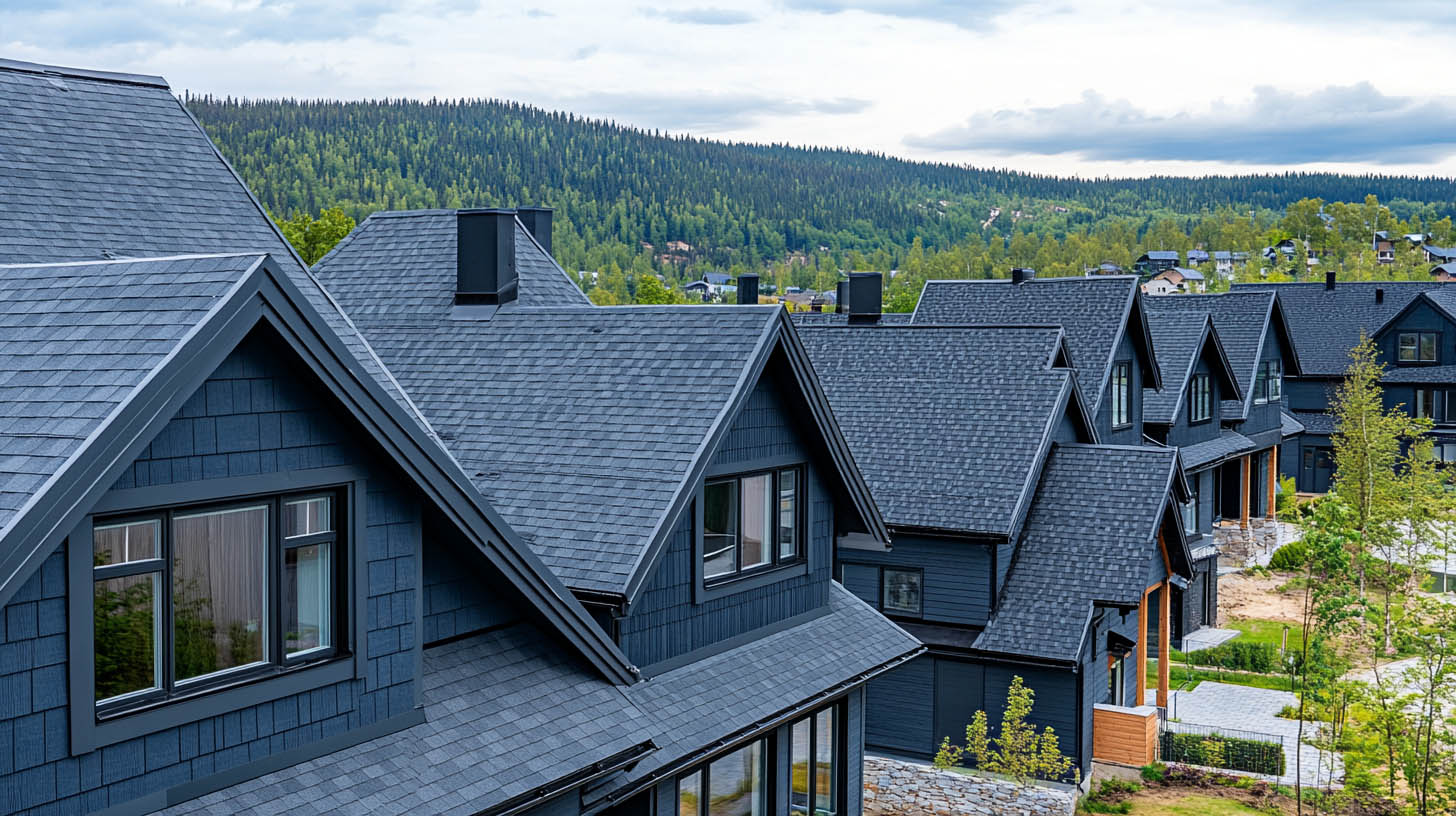
A well-installed and maintained roof is critical for the longevity and protection of any home. At Rainstoppers Roofing, we understand how essential it is to ensure your roof serves its purpose for as long as possible, and that’s why knowing the lifespan of your shingle roof is crucial. Rainstoppers Roofing serves Charleston, WV, with roofing solutions designed to last.
Average Lifespan of Different Shingle Roof Types
Shingle roofs are popular due to their cost-effectiveness and ease of installation. However, not all shingles are created equal. Understanding the differences between shingle types can help you choose a roof that matches your durability needs and budget.
Three-Tab Shingles: An Economical Option
Three-tab shingles are the most basic and affordable option. These shingles are lightweight and easy to install, but they come with a relatively short lifespan of 15 to 20 years. The climate in which your home is located, along with regular maintenance, can greatly impact their longevity.
Dimensional Shingles: More Durable and Stylish
Dimensional shingles, also called architectural shingles, are a more durable option, with a lifespan of 20 to 30 years. Their layered structure provides better protection against the elements, making them ideal for areas that experience harsher weather conditions. If you are considering upgrading your home’s aesthetic appeal along with increased longevity, dimensional shingles are a sound investment.
Luxury Shingles: High-End Protection
For homeowners seeking both durability and style, luxury shingles offer the best of both worlds. With a lifespan of 25 to 30 years, these premium shingles are designed to withstand severe weather conditions and impacts from falling debris. Although they are the most expensive shingle type, their extra protection and durability make them worth the investment for homes in areas prone to extreme weather.
Interesting Fact: Asphalt shingles were first introduced in the early 1900s as an affordable alternative to wood and slate roofing. Today, they account for over 80% of all residential roofing materials used in the U.S.
Common Signs of an Aging Roof
Recognizing the signs of a deteriorating roof can help you address issues before they require a complete replacement. Below are key indicators to watch for:
- Curling or Cupping Shingles: When shingles curl at the edges or form a concave shape, they become more susceptible to water damage.
- Missing Shingles: Gaps in your roof make it vulnerable to leaks and other damage.
- Cracked Shingles: Visible cracks allow water to seep through, potentially causing interior damage.
- Granule Loss: Finding granules in gutters or at the base of your downspouts is a sign that your shingles are wearing down.
- Algae Growth: Dark streaks on your roof caused by algae can hold moisture and accelerate deterioration.
Interior Warning Signs
In addition to visible damage on the roof, some interior signs may indicate your shingle roof is nearing the end of its life:
- Water Stains: Discoloration on your ceilings or walls may point to a roof leak.
- Higher Energy Bills: A compromised roof allows heat to escape, causing your HVAC system to work harder.
How to Prolong the Life of Your Shingle Roof
Extending the lifespan of your shingle roof involves proactive maintenance, proper ventilation, and addressing issues before they become severe.
Regular Maintenance Is Key
Routine maintenance is crucial. Conduct inspections twice a year, looking for signs of wear and tear. Keep your roof free of debris such as leaves and branches, which can trap moisture. Trim back any overhanging tree branches to prevent them from falling onto the roof and causing damage.
Ventilation and Insulation: A Critical Pairing
Your roof’s lifespan depends greatly on proper ventilation and insulation. Ensuring your attic is well-ventilated helps regulate temperatures and prevents excessive heat buildup, which can cause shingles to age prematurely. Proper insulation also helps maintain a consistent temperature, reducing stress on your roof during extreme weather conditions.
Prompt Repairs
Addressing minor issues early can prevent costly repairs or the need for a full roof replacement. If you notice leaks or missing shingles, take immediate action. Replacing damaged shingles as soon as they appear helps maintain your roof’s integrity.
Professional Inspections
While regular homeowner inspections are important, having a professional roofing contractor conduct a more thorough examination at least once every few years is essential. A qualified contractor can spot early signs of deterioration that might go unnoticed.
Frequently Asked Questions
How often should I inspect my roof?
It’s recommended to inspect your roof twice a year, once in the spring and once in the fall.
Can I repair individual shingles, or do I need a full replacement?
In many cases, damaged shingles can be replaced individually. However, if the damage is widespread, a full replacement may be more cost-effective in the long run.
What are the benefits of upgrading to luxury shingles?
Luxury shingles offer enhanced durability and aesthetic appeal, with a longer lifespan than traditional three-tab shingles, making them ideal for homes in regions with severe weather.
How long does it take to replace a shingle roof?
Depending on the size of the home, replacing a shingle roof can take between one and three days.
Can extreme weather affect my roof’s lifespan?
Yes, roofs in areas with extreme weather conditions, such as heavy snow, hail, or high winds, tend to have shorter lifespans due to increased wear and tear.
Conclusion
The longevity of your shingle roof depends on various factors, including the type of shingles you choose, regular maintenance, and timely repairs. A well-maintained roof can last decades, providing your home with essential protection and value. Whether you’re looking to prolong the life of your current roof or considering an upgrade, staying informed is key to making the best decision for your home’s future.To find out if it’s safe to install asphalt shingles in the winter, click here.
